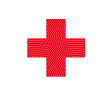Some of the mistakes survivalists make is rather than ensure they have a minimal amount of survival gear and equipment across all priorities, some will focus on fulfilling one category of equipment, such as firearms ie. purchasing many makes and calibers, before starting to build their supply of food, clothing, boots, flashlights, batteries, etc.
The immediate priorities for someone just beginning to get prepared should be gear that can be carried by one person on his/her body, usually in a pack – sometimes this pack is called the “
survival bug-out bag”. If you survival plan is to re-locate you and your family to a safer location, perhaps with relatives or friends in a rural area, then the following list would be a starting point for your personalized survival bug out bag built to support your plan to enable your movement to their location:
Firearm. Rifle or shotgun preferably, handgun is good backup firearms; rifle is nothing else.
Ammunition. Several boxes, consider 100 rounds or shot shells a starting point.
Gun cleaning kit. There are several small complete kits on the market.
Canteens or Camel-Baks. Better yet, a combination day pack – Camel Bak.
Clothing. Durable clothing and does not and quite probably SHOULD NOT have to be camouflage. Earth colors such as light green or brown, maybe tan will work. Camouflage may attract unwanted attention during a movement in a developed area before things got really bad.
Gloves. Probably need three sets: work, cold weather and a pair that you can operate (shoot) your firearm with.
Boots. Good pair of lace up hunting or military style boots; broken in to YOUR feet.
Sleeping Bag. Lightweight – and able to fit into, or strapped to, your combo day pack Camel- Bak type rucksack.
Gerber or Leatherman combination tool. Many uses and not just for McGyver type situations.
Water Purification device. This is usually a pump action filter. Several lightweight ones on the market.
Survival Manual. The SAS or U.S. Army Survival Field Manual, both good references.
Good large folding knife or fixed blade, with sharpening stone.
Flashlight. Even better have two or three of them. Get LED’s rather than bulbs, at least one with a red lens or red LED feature.
Spare batteries. Consider buying rechargeable batteries and a solar/12v recharger.
Lantern. There are several small LED type lanterns that run a long time on common small batteries.
Poncho or Ground Cloth. Water resistant, can be used as a rain poncho or to make a lean to tent for shelter.
Long life food items. Canned foods generally last a long time but are heavy if you have to carry them. Army style MRE’s are a lightweight, but expensive alternative.
Quick Snack Foods. For eating on the move without preparation. These would include nutrition bars, trail mix packs, beef jerky packets, etc.
Roll of Duct Tape. Buy the green stuff and not the silver tape.
Butane Lighters. Buy a three pack of these at the checkout of a local store.
Rope or heavy duty twine. Military suspension line is ideal.
AM/FM/Shortwave Radio. Hand cranked, capable of using batteries, ensure you have the weather and emergency warning frequencies on it.
Medical Kit. All necessary prescription meds - buy and rotate stocks what you really need to take. Consider heavy trauma and routine medical needs.
Vitamins and Supplements. Buy high quality products and rotate to ensure highest extended expiration date as with your prescription meds.
Matches and candles. Cheap and still effective way to provide light and heat in small places. Matches should be the wooden type. You can coat the ends in wax or even chapstick to protect the sulfur and igniter.
If you plan is to use a vehicle, you can pre-load additional items in your vehicle, primarily water, food and clothing. At the last minute you can add all the extra food and water you can load. Ensure your vehicle has a minimal tool kit as well as at least one full-size up spare tire.
Summary:
- The above gear list becomes your last ditch “personal survival bug out” bag, designed to throw into a vehicle and “bug out”. If you have to exit your car and travel on foot, then you are much better prepared to survive and get where you are going.
- Everyone in the family needs their own survival bug out bag. Ensure you cross load so that each individual has the capability to survive if separated from the main group.

























